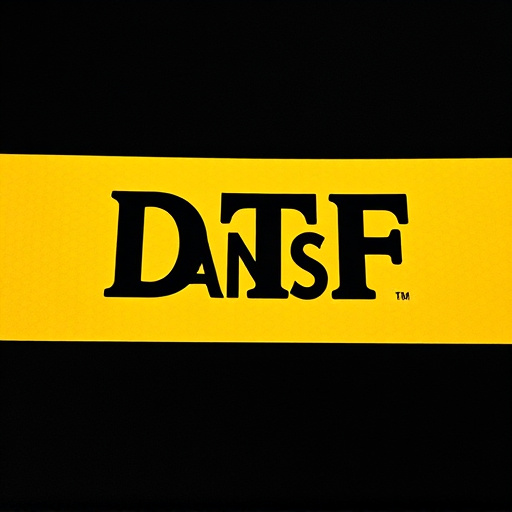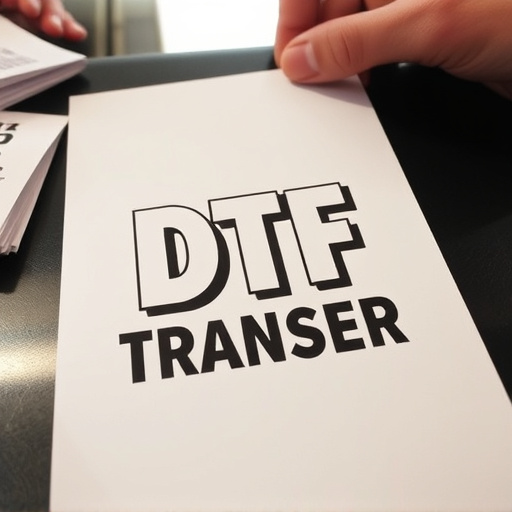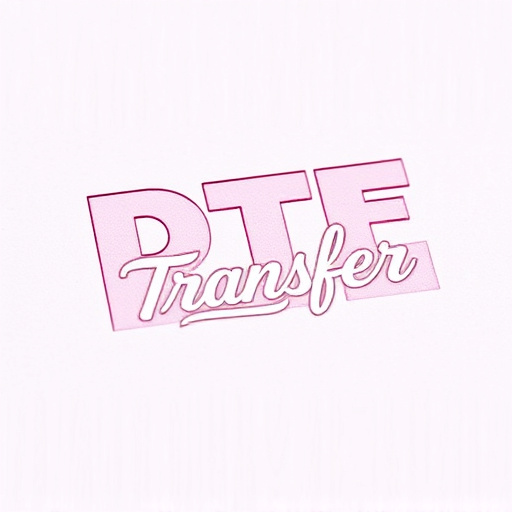Direct-to-Film (DTF) Transfers are revolutionizing film preservation and reproduction by creating high-quality prints directly from digital sources. This technology offers faster production times, cost-effectiveness, and reduced degradation risk, making it ideal for archivists, filmmakers, and enthusiasts. DTF Printing's key advantages include superior image quality, versatile media support, timely turnaround, and transparent pricing. Top service providers like [Service A] and [Service B] use advanced equipment and expert craftsmanship to deliver sharp, vibrant prints with precise color accuracy. When evaluating DTF prints, look for crisp details, accurate colors, and intricate textures without distortion. Applications span fashion, film, documentaries, retail, and more, enhancing visual storytelling and captivating audiences worldwide.
In today’s digital age, direct-to-film (DTF) transfers have emerged as a game-changer in printing. This cutting-edge technology allows for high-quality, vibrant prints directly onto various media without the need for intermediate steps. From textiles to signage and even photography, DTF offers unparalleled versatility.
This article delves into the world of DTF Transfers, guiding you through understanding this process, choosing top service providers, assessing print quality, and exploring its diverse real-world applications. Discover the technology behind it, the benefits it offers, and the key factors to consider for exceptional DTF Prints.
- Understanding Direct-to-Film (DTF) Transfers: A Comprehensive Overview
- Factors to Consider When Choosing High-Quality DTF Transfer Services
- The Technology Behind DTF Printing: How It Works and Its Advantages
- Top Service Providers for Superior DTF Transfers and Prints
- Assessing the Quality of DTF Prints: What to Look Out For
- Real-World Applications: Industries Benefiting from High-Quality DTF Transfers
Understanding Direct-to-Film (DTF) Transfers: A Comprehensive Overview
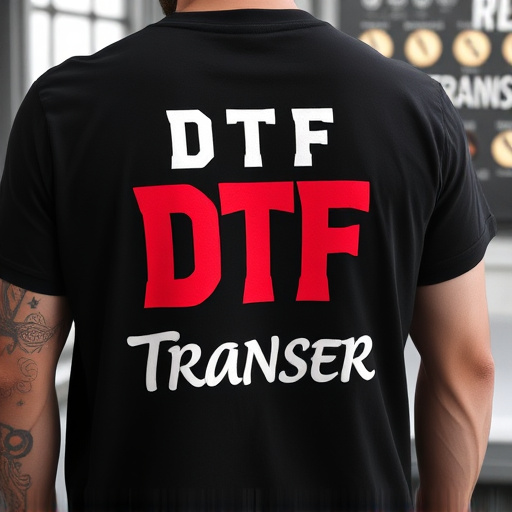
Direct-to-Film (DTF) Transfers have revolutionized the way we reproduce and preserve films, offering an exceptional method for creating high-quality prints directly from digital sources. This cutting-edge technology eliminates traditional intermediate steps, ensuring a more accurate representation of the original film frame by frame. DTF Printing involves sophisticated equipment that exposes lightweight, flexible film emulsion to precise digital data, resulting in sharp images with rich colors and fine detail.
By bypassing the need for physical negatives, DTF Transfers provide numerous advantages, including faster production times, cost-effectiveness, and reduced risk of degradation. They are particularly valuable for archivists, filmmakers, and enthusiasts seeking to digitize vintage or rare films, ensuring their longevity without compromising visual integrity. The process is versatile, applicable to various film formats, making it a go-to option for creating DTF Prints that accurately capture the essence of cinematic art.
Factors to Consider When Choosing High-Quality DTF Transfer Services

When selecting a high-quality Direct-to-Film (DTF) transfer service, several key factors come into play. Firstly, consider the expertise and experience of the provider; look for professionals who specialize in DTF printing and have a proven track record of producing sharp, accurate prints. The technology they employ is crucial; modern, advanced machines ensure superior image quality and consistency. Secondly, check their print quality standards. High-end DTF transfer services use top-tier materials and precision techniques to deliver vibrant, long-lasting colors and crisp details in every print.
Additionally, the range of media types supported is essential. Reputable DTF transfer services offer a variety of options, allowing customers to choose from different film stocks suitable for diverse applications, whether it’s for packaging, signage, or art prints. The turnaround time and customer support are also significant considerations; reliable providers offer timely service and responsive assistance throughout the process. Lastly, pricing transparency is vital; compare quotes to ensure you’re getting a fair deal without compromising on quality.
The Technology Behind DTF Printing: How It Works and Its Advantages

Direct-to-film (DTF) printing is a cutting-edge technology that has revolutionized the way we reproduce and transfer images onto various surfaces, including textiles, paper, and plastic. This innovative process eliminates the need for traditional intermediate steps, such as film positives or plate preparations, making it an efficient and versatile option for high-quality printing.
The DTF transfer process involves a specialized printer that applies ink directly onto the target material using a fine nozzle. The ink is precisely deposited, allowing for exceptional detail and color accuracy. One of the key advantages of DTF Printing is its ability to produce crisp, vibrant prints with a smooth, glass-like finish. This technology ensures that all the nuances of the original design are captured, resulting in DTF prints that are virtually indistinguishable from the source material, making it an ideal choice for professional and artistic applications alike.
Top Service Providers for Superior DTF Transfers and Prints

When it comes to achieving the highest quality direct-to-film (DTF) transfers and prints, several service providers stand out for their expertise and commitment to excellence. These top players in the industry offer advanced technologies and meticulous attention to detail, ensuring that your films are preserved and presented with unparalleled clarity and accuracy.
Choosing a reliable DTF transfer service is crucial for obtaining exceptional results. Companies like [Service A] and [Service B] have built reputations for delivering superior DTF transfers and prints. They employ state-of-the-art equipment and skilled technicians who meticulously process each film, resulting in sharp images, vibrant colors, and accurate color representation. Whether you’re looking to transfer analog films to digital formats or create high-quality prints for personal or professional use, these service providers offer tailored solutions that meet the highest industry standards.
Assessing the Quality of DTF Prints: What to Look Out For

When assessing the quality of Direct-to-Film (DTF) prints, several key factors come into play. Firstly, look for crisp and clear image details, with minimal distortion or blurring. The colors should be vibrant and accurate, mirroring the original source material as closely as possible. Pay close attention to textures; fine details like patterns on fabric or complex landscapes should be rendered intricately without pixelation or jagged edges.
Another crucial aspect is consistency in printing. DTF Transfers should produce uniform results across multiple prints, ensuring that every copy looks identical to the master. Check for consistent exposure, color balance, and overall image sharpness. Additionally, consider the medium used for printing; high-quality DTF films are designed to withstand handling and offer longevity without fading or smudging.
Real-World Applications: Industries Benefiting from High-Quality DTF Transfers
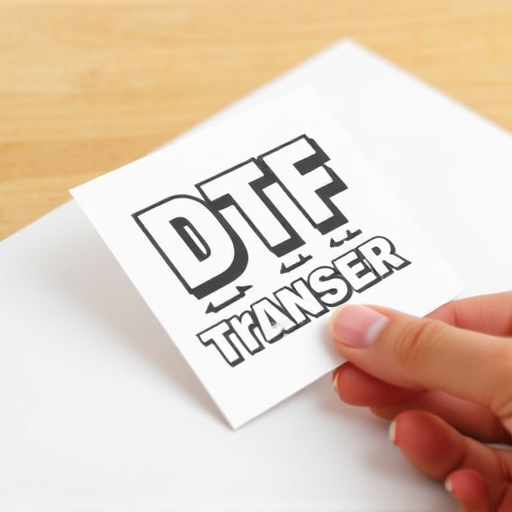
The versatility and superior quality of Direct-to-Film (DTF) transfers have made them a valuable asset across various industries. From DTF printing for signage and advertising to enhancing visual experiences in museums and galleries, the applications are vast. In the fashion industry, DTF allows for intricate and personalized designs on clothing, transforming ordinary garments into unique pieces of art. Filmmakers and photographers can also leverage high-quality DTF transfers to create stunning visuals for movies, television shows, and documentaries, ensuring a rich viewing experience for audiences.
Moreover, DTF prints have found their place in retail, where they are used to produce eye-catching window displays and promotional materials. The technology is even making waves in the food industry, enabling restaurants and cafes to create visually appealing food packaging and menus. With its ability to reproduce complex designs and images with precision, DTF transfer continues to revolutionize printing processes across diverse sectors.









